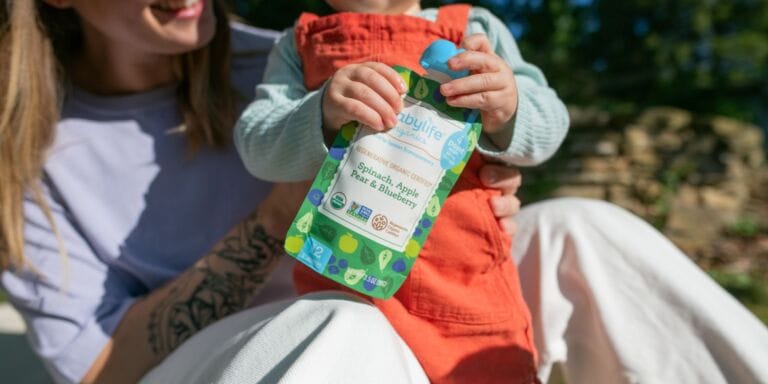5 easy ways to help your picky eater get the nutrition they need

3. Serve finger foods and dips
Table of Contents
Toddlers are a busy, active, and very curious bunch so it should come as no surprise that getting them to sit still for a meal may be a challenge. Because growth tends to slow down a bit in the toddler years, they may be slightly less hungry at this age, too, so it’s no wonder that toddlers can turn into picky eaters at this time.
First, don’t worry if you have a picky little one. It’s common at this stage, and most toddlers will grow out of it. However, picky kids can grow into picky adults if they don’t expand their palate beyond “kid foods.”
Here are five strategies for guiding your toddler past the picky eating stage and get them the nutrients they need.
1. Incorporate tasty smoothies
One of my favorite ways to sneak a lot of nutrient dense foods into kids is with smoothies! If you have a good recipe, you can easily add in veggies and superfoods to boost the nutrition without sacrificing taste. Adding baby spinach to a smoothie is kind of like a “secret salad” because they get the nutrition of the salad greens, without knowing they are eating them!
Vegetables not only add vitamins and minerals but can add beautiful color making it more appealing to littles. Try a fiber and nutrient-rich smoothie. Plus, smoothies are portable so a busy toddler (and mama) can take them on the go.
2. Make food fun
When there is a picky eater at the table, mealtime can turn into a power struggle, which can not only make meals a chore, but it can actually foster picky eating habits. Ditch the power struggles for fun and just see what happens!
Cut fruits and veggies into shapes, have carrot crunching contests at the table, serve food with mini kid-sized utensils and colorful bowls. Do what you can to make eating fun for your toddler, even if it’s telling jokes or singing songs at the table. When meal and snack time are joyful, it helps develop healthier attitudes and relationships with food.
3. Serve finger foods and dips
Consider offering foods that they can pick up with their fingers and add in healthy dips. Pro tip: most toddlers love to dip finger foods. Veggies are great dipped in hummus or a healthier ranch dip. Chicken strips are extra yummy dipped in a simple homemade honey mustard sauce (simply combine mustard, honey, mayo and a pinch of salt to taste).
Your toddler might enjoy dessert hummus, which is made from chickpeas and flavored with cinnamon, cocoa or vanilla. It’s loaded with all the protein and fiber of regular hummus, but it tastes like cookie dough or frosting, making it a nutritional treat. Dip into it with apple slices or an organic whole grain cookie.
4. Turn your toddler into a top chef
You might be surprised at how much a toddler can actually do in the kitchen. I have taught cooking lessons to kids as young as 3 years old, and they always amaze me with their abilities! When a kid makes something on their own, they will be way more willing to try it. Get your toddler into the kitchen to help make simple recipes, like sandwich wraps, yogurt parfaits, and smoothies and see how it changes their willingness to try new foods.
5. Skimp on the sugar
A new study conducted by the CDC found that babies and toddlers are getting way too much added sugar . High sugar intake in toddlers and babies could be influencing their food preferences, and setting them up for future bad eating habits, the research explains. Sugar is not just empty calories, eating high sugar diets can also increase the risk of weight gain and even increase the risk of disease later in life.
Sweet foods and sugary drinks can cause blood sugar to spike then crash, which can contribute to toddler meltdowns. To choose foods that will provide lasting energy for your toddler, I recommend avoiding sweetened drinks and following my “Rule of Three” for eating: make sure that each meal or snack contains at least one of the following blood-sugar leveling macronutrients:
- Healthy fats (found in nuts, seeds, avocado, and full-fat organic dairy products like cheese and yogurt)
- Fiber (sources include whole fruit and veggies, whole grains, legumes, nuts and seeds
- Protein (Good animal-based sources include meat, dairy and eggs, while good plant-based sources include nuts, seeds, legumes, hemp, chia and quinoa).
Naturally sweet whole fruits come paired with vitamins, minerals and fiber, making them a better choice for toddlers than a sugary snack or drink that is just empty calories.
As a former picky eater myself, and the mom of a reformed picky eater, I know the struggle is real when it comes to picky eating, and that there is no “quick fix.” Just take it one day at a time, keep encouraging them, and avoid the power struggles! If you don’t see improvement in your child’s eating habits, consider scheduling a consultation with the pediatrician or a feeding specialist.





































